Clause de non-responsabilité :
L'installation de bases de données MySQL ne fait pas partie du support DocuWare.
MySQL étant une application tierce, nous n'avons aucun moyen de résoudre les problèmes, de recommander des paramètres supplémentaires ou de vérifier si l'installation est complète.
DocuWare n'est pas responsable des systèmes corrompus, si la base de données est endommagée pendant ou après l'installation.
Question :
Comment installer une base de données MySQL externe et afficher le service dans le Service Control ?
Réponse :
Vérifiez d'abord quelle version de MySQL vous utilisez actuellement avec la commande suivante pour une base de données MySQL :
SHOW VARIABLES LIKE "%version%" ;
Une version sera alors indiquée.
5.0.84 correspond à une base de données interne V1.
5.6.25 correspond à une base de données interne V2.
Pour télécharger l'installation de la V1 :
MySQL 32Bit
MySQL 64Bit
Pour l'installation de la V2, téléchargez :
Community installer
Ce guide couvre l'installation de :
Base de données interne V1
Après avoir téléchargé et exécuté le programme d'installation, vous obtiendrez l'écran suivant après l'écran d'accueil.

Choisissez "Custom" si vous souhaitez installer des fonctionnalités supplémentaires ou "Typical" si aucune fonctionnalité supplémentaire ne doit être installée.


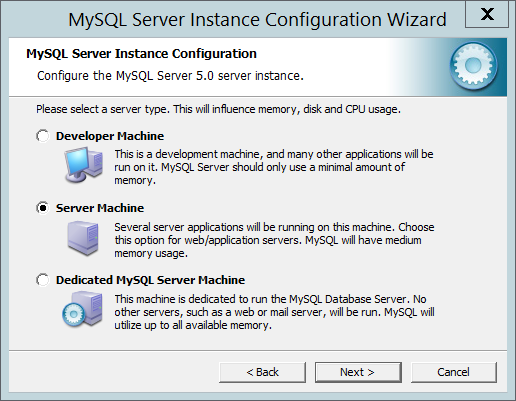
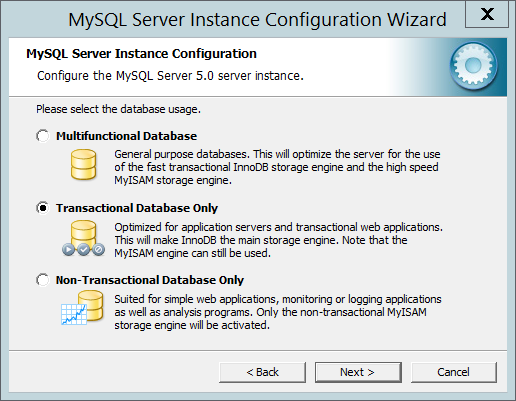
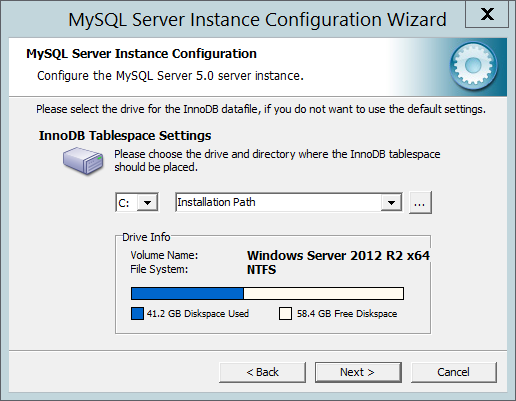
Après avoir choisi le type de base de données, vous pouvez ajuster l'emplacement de stockage des fichiers de la base de données.
Dans la mesure du possible, ne modifiez pas le chemin d'accès.

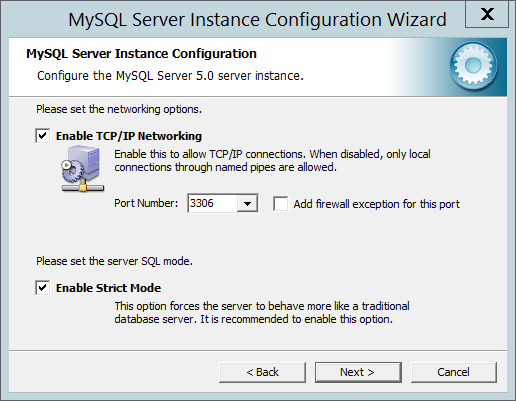
Ici, vous pouvez définir le port souhaité et choisir de créer automatiquement une exception pour le pare-feu.
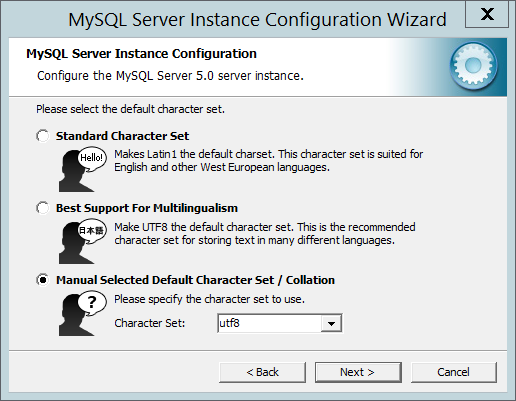
Veuillez choisir "Manuel selection" et utiliser "utf8" dans le menu déroulant.
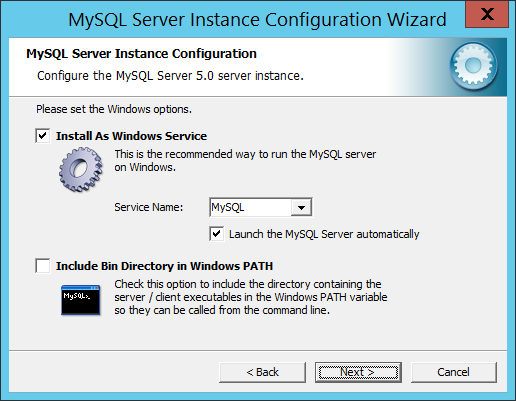
Installez MySQL en tant que service Windows.
Si vous souhaitez afficher la base de données en tant que base de données interne dans le Service Control, veuillez renommer le service en "DWMySQL".
Après cette étape, vous êtes invité à définir un mot de passe pour le compte root.
Veuillez choisir un mot de passe fort et vous en souvenir !
Terminez la configuration en cliquant sur "Execute".
Après l'installation de la base de données, trouvez le my.ini dans "C:\ProgramData\MySQL\MySQL Server 5.6\" et trouvez le my.ini de votre ancien système dans "C:\Program Files (x86)\DocuWare\Internal Database V2".
Le nouveau chemin d'installation peut différer en fonction de la version utilisée.
Téléchargez l'échantillon V1 my.ini
(le téléchargement de fichiers ini peut entraîner un avertissement).
Recherchez la position suivante dans les deux my.ini
# Le jeu de caractères par défaut qui sera utilisé lorsqu'un nouveau schéma ou une nouvelle table est
# créé et qu'aucun jeu de caractères n'est défini
Pour le nouveau my.ini :
Remplacez l'entrée "character-set-server" par toutes les entrées de l'ancien my.ini
ex :
From
character-set-server=utf8
to
character-set-server=utf8
collation-server=utf8_unicode_ci
Vérifiez toutes les autres options dans le my.ini et ajustez tous les paramètres à l'exception de "datadir".
Pour un accès plus facile, vous pouvez utiliser la fonction Compare de Notepad++ pour ouvrir les deux my.ini et voir toutes les différences.
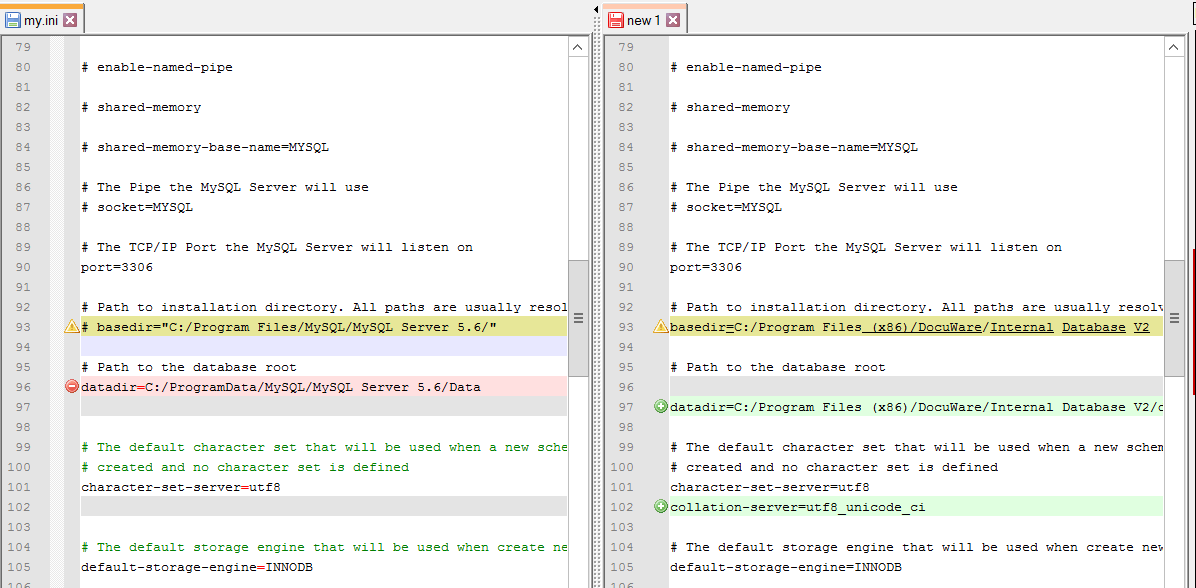
Vous devrez créer un nouvel utilisateur avec les droits nécessaires avant de pouvoir importer les sauvegardes et commencer le processus de migration.
Voici des exemples de déclarations SQL pour créer un utilisateur "dwadmin" avec le mot de passe "password".
Il a tous les privilèges sur n'importe quel schéma.
Les trois déclarations doivent être exécutées.
CREATE USER 'dwadmin'@'localhost' IDENTIFIED BY 'password' ;
GRANT ALL PRIVILEGES ON *.* TO 'dwadmin'@'localhost' ;
FLUSH PRIVILEGES ;
Vérifiez si l'utilisateur créé a les droits DBA sur la base de données.
Après cela, suivez l'article sur la migration.
-------
V2 Base de données interne
Après avoir téléchargé et exécuté l'installation, vous verrez l'un des écrans suivants :
Si rien de MySQL n'est installé sur la machine, vous verrez ceci :
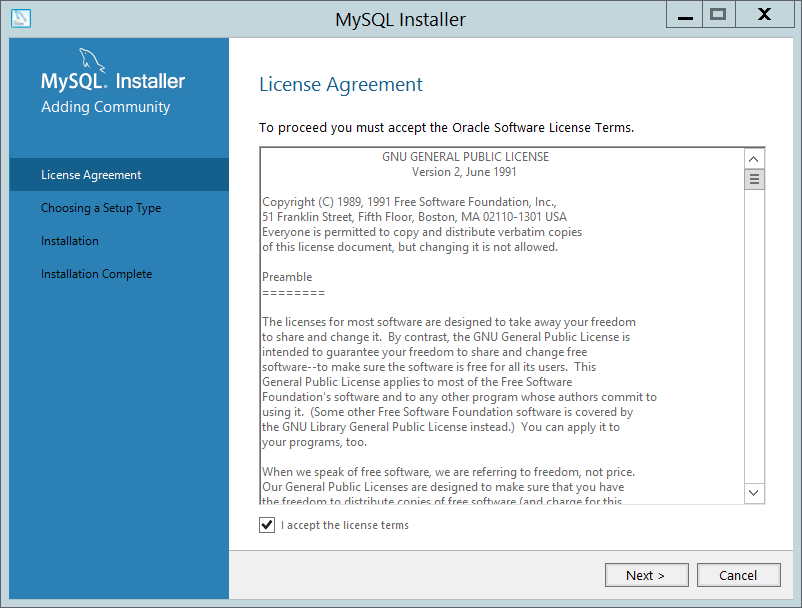

Si MySQL est déjà installé sur cette machine :

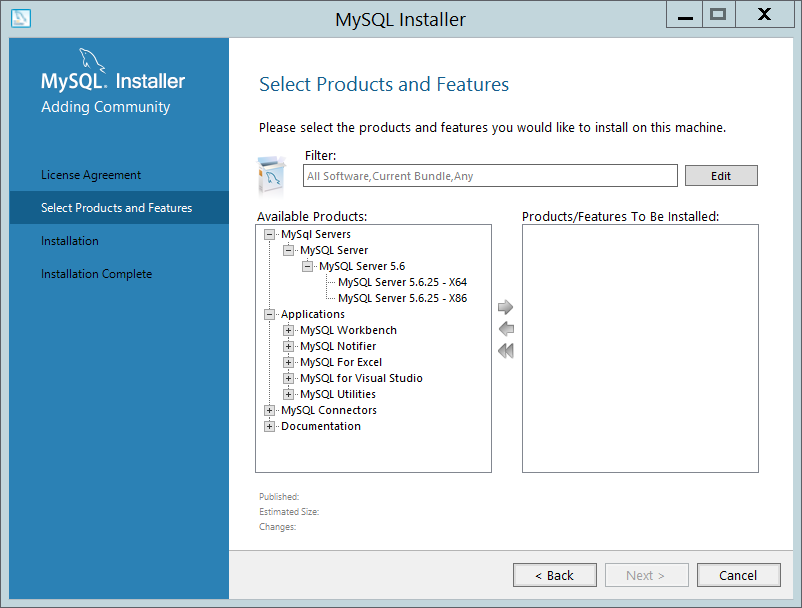
Les deux Configurations se terminent et vous devez configurer l'installation. A partir de là, les deux versions ont la même interface utilisateur.
Poursuivez l'installation jusqu'à la section "Type et réseau".

Ici, vous pouvez définir le port, le type de configuration de la machine, etc.
Sélectionnez Machine serveur si vous souhaitez installer DocuWare sur la même machine.
Vous devez maintenant définir un mot de passe pour l'utilisateur root. Choisissez un mot de passe fort et ne l'oubliez pas !
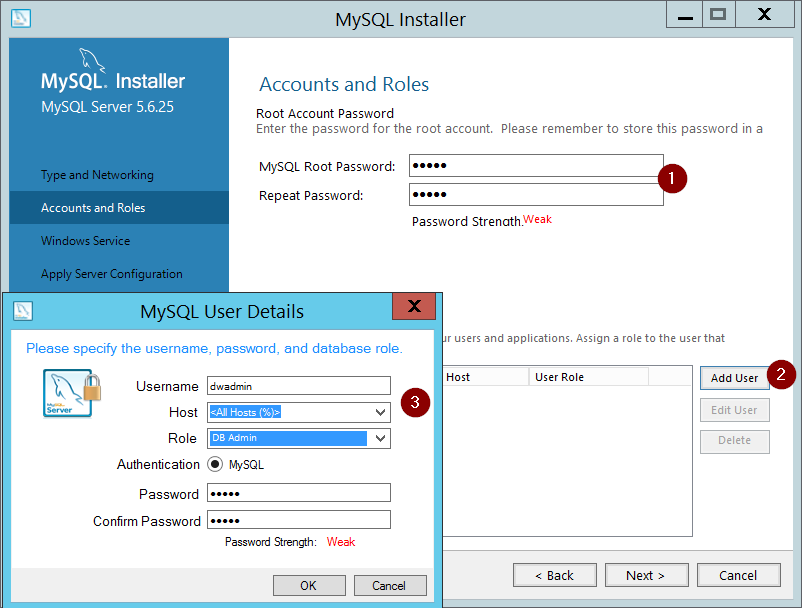
Créez également un nouvel utilisateur pour DocuWare.
L'attribution du rôle "DB Admin" est l'une des meilleures méthodes pour accorder tous les droits nécessaires à DocuWare.
Les droits peuvent être modifiés par la suite.
Avancez jusqu'à ce que vous puissiez choisir le comportement du service Windows.
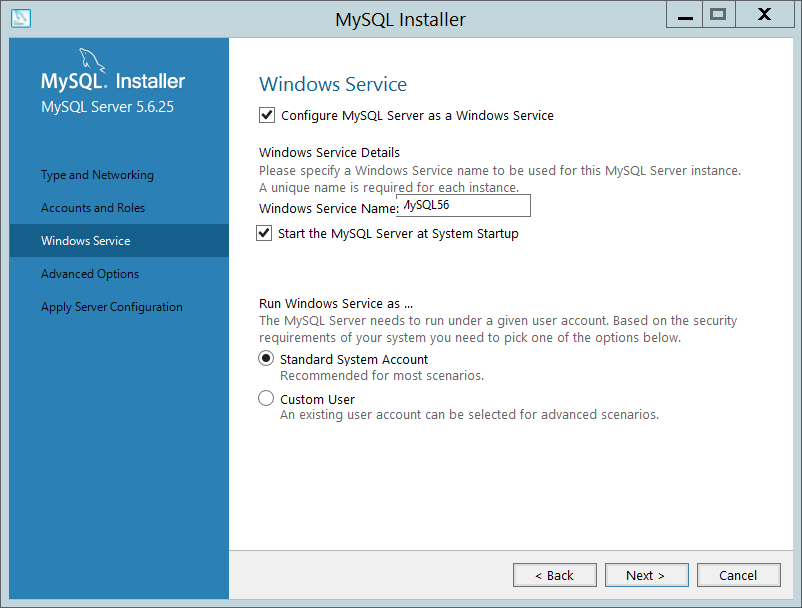
Le droit "Configurer le serveur MySQL en tant que service Windows" doit être accordé.
Si vous souhaitez consulter la base de données via le Service Control, renommez le service en "DWMySQL2"
Après l'installation de la base de données, recherchez le fichier my.ini dans "C:\ProgramData\MySQL\MySQL Server 5.6\" et trouvez le my.ini de votre ancien système dans "C:\Program Files (x86)\DocuWare\Internal Database V2".
Le nouveau chemin d'installation peut différer en fonction de la version utilisée.
Téléchargez l'exemple de V2 my.ini
(le téléchargement de fichiers ini peut entraîner un avertissement).
Recherchez la position suivante dans les deux my.ini
# Le jeu de caractères par défaut qui sera utilisé lorsqu'un nouveau schéma ou une nouvelle table est
# créé et qu'aucun jeu de caractères n'est défini
Pour le nouveau my.ini :
Remplacez l'entrée "character-set-server" par toutes les entrées de l'ancien my.ini
ex :
From
character-set-server=utf8
to
character-set-server=utf8
collation-server=utf8_unicode_ci
Vérifiez toutes les autres options dans le my.ini et ajustez tous les paramètres à l'exception de "datadir".
Pour un accès plus facile, vous pouvez utiliser la fonction Compare de Notepad++ pour ouvrir les deux my.ini et voir toutes les différences.

Vérifiez que vous avez un utilisateur avec tous les droits nécessaires (DBA, si possible super).
Vous devriez avoir créé un utilisateur DB pendant l'installation à l'étape "Créer un utilisateur".
Vérifiez l'utilisateur et ses privilèges ou accordez-lui tous les privilèges.
Ensuite, suivez l'article sur la migration.
Veuillez noter : Cet article est une traduction de l'anglais. Les informations contenues dans cet article sont basées sur la ou les versions originales des produits en langue anglaise. Il peut y avoir des erreurs mineures, notamment dans la grammaire utilisée dans la version traduite de nos articles. Bien que nous ne puissions pas garantir l'exactitude complète de la traduction, dans la plupart des cas, vous la trouverez suffisamment informative. En cas de doute, veuillez revenir à la version anglaise de cet article.


